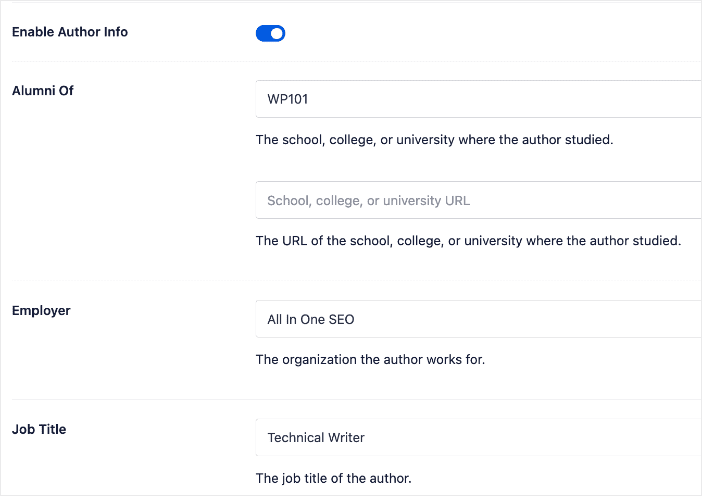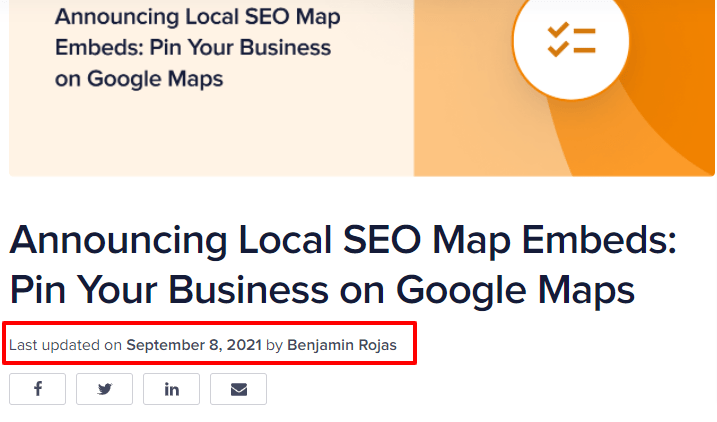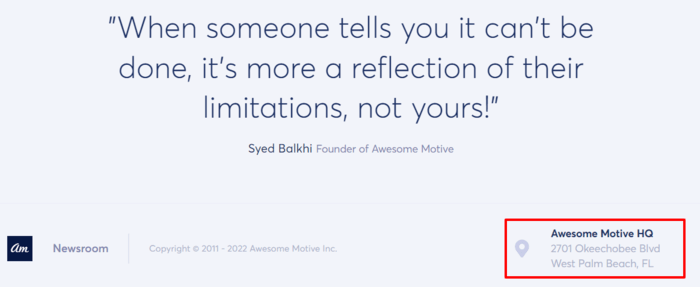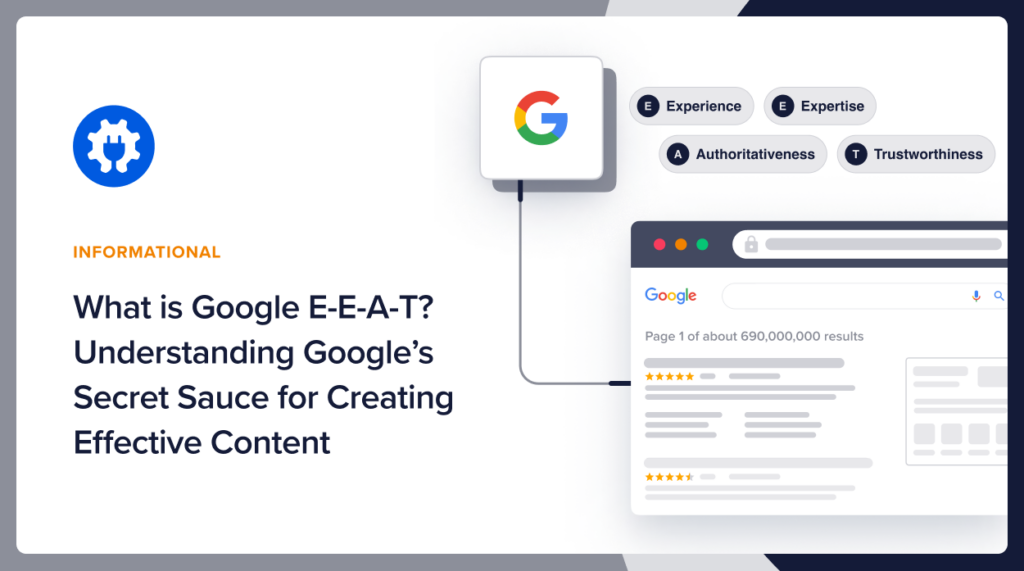What is Google E-E-A-T, and how can it help you create content that ranks?
The internet is a crowded place. With each day that passes, more websites are built, and more content is published. There are over seven million blog posts published every day to put it in context. Unfortunately, though, not all of them have valuable information for users.
This is where Google E-E-A-T comes in.
In This Article
- What is Google E-E-A-T?
- Is E-E-A-T a Ranking Factor?
- 9 Ways to Create Content that Meets Google E-E-A-T Standards
- 1. Use the Right SEO Plugin
- 2. Boost Your Google E-E-A-T Signals with Author SEO
- 3. Know Your Target Audience and What They’re Looking For
- 4. Create Data-rich Content
- 5. Encourage Your Customers to Leave Reviews on Third-party Platforms
- 6. Build Relevant Backlinks to Your Content
- 7. Include Author Bylines to Gain Trust
- 8. Improve Security By Moving to HTTPS
- 9. Make Your Contact Details Easy to Find
- Google E-E-A-T: The Blueprint for Content that Ranks and Converts
What is Google E-E-A-T?
To ensure that users get the best experience, Google introduced E-E-A-T in their Search Quality Evaluator Guidelines. Google designed these to ensure the content published online is of high quality. E-E-A-T is an acronym that stands for:
Experience
Experience refers to the first-hand experiences the author or other members of the team have with that particular topic. It refers to firsthand knowledge or practical familiarity with the topic at hand. For example, a doctor writing about heart disease would have more E-E-A-T than a blogger who simply researched the topic online.
Expertise
Expertise refers to the depth of knowledge the creator of the main content has about the topic. This goes beyond experience and signifies a deep understanding of the subject matter. For example, a financial advisor writing about retirement planning would likely have more expertise than a general finance writer.
Authoritativeness
Authoritativeness refers to the authoritativeness of the main content creator, the content, and the website on which the content is published. This is about being recognized as a trusted and reliable source of information within a particular field. For example, a scientific study published in a reputable journal would be more authoritative than a personal blog post on the same topic.
Trustworthiness
Trustworthiness refers to the level of trust that can be afforded to the main content creator, the content itself, and the website on which it’s published. It encompasses the overall reliability and credibility of the content and the website or publisher hosting it. A website with a history of accurate reporting and fact-checking would be more trustworthy than one with a known track record of publishing false information.
The purpose of these standards is to help improve the quality of content published on the web. In addition, it helps ensure that content is accurate and helpful to users. This is especially true for YMYL pages (your money, your life).
Here are some examples of how E-E-A-T plays out in different contexts:
- Health: When searching for information about a medical condition, Google would prioritize websites and content created by medical professionals with relevant experience and expertise, such as government health agencies, reputable medical organizations, and doctor’s websites.
- Finance: When looking for investment advice, Google would favor content from established financial institutions, certified financial planners, and other qualified professionals.
- Legal: If you’re researching legal matters, Google would likely rank legal advice websites with licensed attorneys and law firms higher than general information websites.
By focusing on building your experience, expertise, authoritativeness, and trustworthiness, you can increase the chances of your content being seen as valuable and reliable by both Google and your audience.
Check out how a car seat safety website leveraged Google E-E-A-T to grow its traffic by 362% in 6 months.
Is E-E-A-T a Ranking Factor?
A frequently asked question about Google E-E-A-T is whether it contributes as a ranking factor.
The simple answer is no.
However, it goes deeper than that. Search engines like Google know that people can make life-changing decisions based on the content they find online. Therefore, the primary purpose of the E-E-A-T guidelines is to ensure the information search engines serve users is truthful, accurate, and helpful.
However, there is a ripple effect that comes from publishing E-E-A-T-worthy content. One such effect is that it positively impacts your SEO, albeit indirectly. Here are a few ways in which E-E-A-T can do that:
Helps Fight Disinformation
Disinformation is a caveat that comes with free speech. In one of Google’s publications highlighting how they fight it, E-E-A-T is mentioned a lot. This just shows the important role it plays in ensuring that the information search engines serve users is accurate. Of course, this implies that content that meets the E-E-A-T standards stands a better chance of ranking.
Helps Improve Content Quality
Content quality plays a massive role in boosting your SEO for many reasons. Some include:
- Increases the chances of your content being shared, thereby driving more traffic
- Helps you get organic backlinks
- Improves engagement metrics like click-through rates (CTR), dwell time, page views, and more
Filler content that provides no value doesn’t cut it anymore. With many options available, people won’t waste time on a website without helpful content. Instead, they’ll quickly click away and find a better resource. Unfortunately, this results in high bounce rates, which indicate to search engines that your content doesn’t meet search intent.
Ensures Your Content Provides a Positive Experience
Search engines are putting more emphasis on user experience (UX). Because of this, it must play a significant role in all your content creation and SEO efforts.
That’s another area in which Google E-E-A-T comes into play.
Applying Google’s recommendations for creating E-E-A-T content ensures publishers create content that offers a positive experience for readers.
9 Ways to Create Content that Meets Google E-E-A-T Standards
Now that you know what Google E-E-A-T is and why it’s important, let’s quickly dive into some elements to help you create content that meets Google’s E-E-A-T standards.
1. Use the Right SEO Plugin
One of the first steps to creating content that meets Google’s E-E-A-T standards is to use the right SEO plugin. For WordPress users, it doesn’t get better than All In One SEO (AIOSEO).
AIOSEO is a powerful yet easy-to-use SEO plugin that boasts over 3 million active installs. Millions of smart bloggers use AIOSEO to help them boost their search engine rankings and drive qualified traffic to their blogs. That’s because the plugin has many powerful features and modules designed to help you properly configure your SEO settings. Examples include:
- Cornerstone Content: Easily build topic clusters and enhance your topical authority and semantic SEO strategy.
- SEO Revisions: Track any changes you make to your site and see their impact on your SEO. Plus, you get to see on a timeline how Google updates affect your site.
- Advanced Robots.txt Generator: Easily generate and customize your robots.txt file for better crawling and indexing.
- TruSEO Highlighter: Makes it easy to spot on-page SEO issues and gives recommendations for fixing them.
- Next-gen Schema generator: This no-code schema generator enables users to generate and output any schema markup on your site.
- Redirection Manager: Helps you manage redirects and eliminate 404 errors, making it easier for search engines to crawl and index your site.
- Link Assistant: Powerful internal linking tool that automates building links between pages on your site. It also gives you an audit of outbound links.
- SEO Preview: This gives you an overview of your search and social snippets and general SEO so you can improve your optimization.
- IndexNow: For fast indexing on search engines that support the IndexNow protocol (like Bing and Yandex).
- Sitemap generator: Automatically generate different types of sitemaps to notify all search engines of any updates on your site.
- And more
AIOSEO also has other powerful tools to help you master your on-page SEO, off-page SEO, and even technical SEO. The best part about AIOSEO is that it’s a no-code SEO plugin. This means you can use it to perform most SEO tasks even if you don’t have any technical or coding knowledge.
For step-by-step instructions on how to install AIOSEO, check out our installation guide.
Check out our article on the best WordPress plugins for more tools to help you manage your site.
2. Boost Your Google E-E-A-T Signals with Author SEO
Implementing Google’s E-E-A-T content quality guidelines is easier if you have a plugin like AIOSEO. This is thanks to the Author SEO module.

This module enables you to add information to your user profiles:

You can also add your areas of expertise:

All this information points to your experience and expertise in your field. Plus, coupled with the JSON schema markup, it proves to search engines that you’re qualified to talk about the subject. This helps boost your author SEO and rank higher in searches around your keyword.
All this information helps you demonstrate Google E-E-A-T, resulting in better rankings.
3. Know Your Target Audience and What They’re Looking For
One of the first ways to ensure that you’re creating E-E-A-T content is to know what your users are looking for when they input a search query.
- Are they looking for information?
- Do they want to buy a product now?
- Are they checking out different products they want to buy soon?
- Are they looking for a particular website/web page?
The reason behind a search query is called search intent (or user intent).
Understanding search intent is pretty easy. A couple of ways to do it include:
- Use Google: Google your keyword and check the type of content that appears in the top results. This is what Google deems the most relevant answers for that search term.
- Use a Keyword research tool: Keyword research tools like Semrush show search intent as part of the keyword metrics.
- Check keyword modifiers: Using a keyword research tool, check the keyword modifiers used the most in other related keywords or variations of your keyword.
Once you’ve figured out what your audience is looking for, create content that answers their questions fully.
4. Create Data-rich Content
Another way to ensure that your content meets E-E-A-T requirements is to leverage data as much as possible. By citing facts and data from reputable sources, you show that your content is accurate. It also helps you showcase your expertise, make your content authoritative, and earn your readers’ trust. Therefore, data is the perfect ingredient for creating E-E-A-T content.
Besides citing other resources, you can also conduct your own research. This has the advantage of establishing you as an authority and expert in your field. It also helps you build backlinks to your site, which brings us to the next point.
5. Encourage Your Customers to Leave Reviews on Third-party Platforms
Reviews are not just a powerful form of word-of-mouth marketing or social proof. They’re also a great way to build your website’s E-E-A-T, especially with Google’s reviews update.

6. Build Relevant Backlinks to Your Content
Backlinks have been an important ranking factor since the inception of the internet. They’re also an essential element in creating E-E-A-T content. The main reason is that backlinks are a vote of confidence that your content is valuable and helpful. The more backlinks you build to a piece of content, the more authoritative it becomes.
Note, however, that not all backlinks are created equal. You must build backlinks from high-authority sites relevant to your topic. Building backlinks from irrelevant backlinks will only signal to search engines that you’re simply building backlinks to game the system.
Reviews signal that users can trust you and that you’re an expert in your field. When your customers leave reviews (negative and positive), take time to respond to them. Doing so indicates that you’re reputable and committed to customer success.
7. Include Author Bylines to Gain Trust
One way to encourage trust in your content is by giving authors bylines.

Readers and search engines alike want to know who’s responsible for creating a piece of content and whether they’re a reputable source or not. To improve the author’s trustworthiness, you can also include links to their social media profiles or website.
On the same note, try to involve subject matter experts as much as possible in your content creation process. This will ensure that your content is accurate and helpful. It also makes it easier to pull on their experience. You can also leverage their credentials to boost your trust signals and further bolster the fact that the authors have first-hand experience with the topic.
8. Improve Security By Moving to HTTPS
If you haven’t yet, invest in your website’s security by moving from the less secure HTTP protocol to the more secure HTTPS protocol. Doing this is another excellent way of proving that your site is trustworthy.
To move to HTTPS, you must invest in a Secure Socket Layer (SSL) certificate. An SSL certificate is a digital certificate that authenticates a website’s identity. More importantly, it provides an encrypted connection protecting your visitors from malicious actors. Some great places for getting free or affordable SSL certificates include:
Ensuring that your website is secure is an important way of improving your E-E-A-T score.
9. Make Your Contact Details Easy to Find
Another easy way to boost the trustworthiness of your website is by openly displaying your contact details.

Particularly if you’re a location-based business, elements like your address and phone numbers signal to search engines and users that you are an entity they can trust.
An added advantage of openly displaying your physical address is that it can also help boost your local SEO.
You can also check out our guide on how to add Local Business schema. Doing so will help you add your Google Maps location to your website, further bolstering your local SEO strategy. More importantly, it will also help you meet Google’s E-E-A-T standards.
Google E-E-A-T: The Blueprint for Content that Ranks and Converts
Understanding Google’s search quality rater guidelines is essential to helping you create effective content. Following these guidelines will help ensure that your content is competitive in search.
Examples of such guidelines are the E-E-A-T standards.
By following the tips above, you can create content that ranks well. But more importantly, your content will offer users a positive experience, resulting in better conversion rates.
We hope this article has helped you understand that coding and technical knowledge are not a necessity for you to master SEO.
We hope this article helped you know what Google E-E-A-T means. You may also want to check out other articles on our blog, like our ultimate WordPress SEO guide or our guide to starting a small business blog.
If you found this article helpful, then please subscribe to our YouTube Channel. You’ll find many more helpful tutorials there. You can also follow us on Twitter, LinkedIn, or Facebook to stay in the loop.
Disclosure: Our content is reader-supported. This means if you click on some of our links, then we may earn a commission. We only recommend products that we believe will add value to our readers.


Wonderful web site Lots of useful info here Im sending it to a few friends ans additionally sharing in delicious And obviously thanks to your effort